
Kinsale: The Jewel of Ireland's Southern Coast
Discover Kinsale, Ireland's coastal gem, where history, cuisine, and scenic beauty converge in a vibrant and welcoming town.
Kinsale is a picturesque coastal town in County Cork, Ireland, known for its rich maritime history, colorful streets, and gourmet restaurants. Nestled along the River Bandon, Kinsale offers a blend of charming architecture, stunning seascapes, and a vibrant cultural scene that attracts visitors from all over the world. Strolling through Kinsale, you'll be greeted by a rainbow palette of buildings housing a variety of shops, cafes, and galleries. The town's historic sites, such as Charles Fort and Desmond Castle, provide a glimpse into its storied past, while the scenic harbor offers opportunities for sailing, fishing, and boat tours. The nearby Old Head of Kinsale boasts breathtaking cliff views and a world-renowned golf course. Kinsale is also a haven for food lovers. The town is famous for its seafood, and many of its restaurants and eateries pride themselves on serving fresh, locally sourced ingredients. The annual Kinsale Gourmet Festival is a testament to the town's culinary reputation, drawing food enthusiasts from near and far. Whether you're exploring its historical landmarks, indulging in its culinary delights, or simply enjoying the coastal scenery, Kinsale is a destination that promises a memorable experience.
Local tips in Kinsale
- Visit Charles Fort for a deep dive into Kinsale's military history and panoramic views of the harbor.
- Take a guided walking tour to learn about Kinsale's colorful history and hidden gems from a local perspective.
- Don't miss the Fishy Fishy Cafe for a taste of Kinsale's renowned seafood cuisine.
- Explore the Old Head of Kinsale for spectacular coastal views and a chance to visit the famous golf course.
- Plan your visit during the Kinsale Gourmet Festival in October to experience the town's culinary excellence.
- Wear comfortable shoes as the town's narrow, cobbled streets are best explored on foot.
Kinsale: The Jewel of Ireland's Southern Coast
Kinsale is a picturesque coastal town in County Cork, Ireland, known for its rich maritime history, colorful streets, and gourmet restaurants. Nestled along the River Bandon, Kinsale offers a blend of charming architecture, stunning seascapes, and a vibrant cultural scene that attracts visitors from all over the world. Strolling through Kinsale, you'll be greeted by a rainbow palette of buildings housing a variety of shops, cafes, and galleries. The town's historic sites, such as Charles Fort and Desmond Castle, provide a glimpse into its storied past, while the scenic harbor offers opportunities for sailing, fishing, and boat tours. The nearby Old Head of Kinsale boasts breathtaking cliff views and a world-renowned golf course. Kinsale is also a haven for food lovers. The town is famous for its seafood, and many of its restaurants and eateries pride themselves on serving fresh, locally sourced ingredients. The annual Kinsale Gourmet Festival is a testament to the town's culinary reputation, drawing food enthusiasts from near and far. Whether you're exploring its historical landmarks, indulging in its culinary delights, or simply enjoying the coastal scenery, Kinsale is a destination that promises a memorable experience.
When is the best time to go to Kinsale?
Iconic landmarks you can’t miss
Blarney Castle & Gardens
Experience the magic of Blarney Castle & Gardens, where history, beauty, and the gift of eloquence await you in the heart of Cork, Ireland.

Charles Fort
Experience the historical allure and scenic beauty of Charles Fort, a stunning 17th-century fortress in Kinsale, County Cork, Ireland.

Dinos
Discover the best fish and chips in Kinsale at Dinos, a seafood lover's haven along the picturesque Pier Road.

The Bulman Bar & Restaurant Kinsale
Experience authentic Irish hospitality at The Bulman Bar & Restaurant in Kinsale, where delicious food meets stunning coastal views.
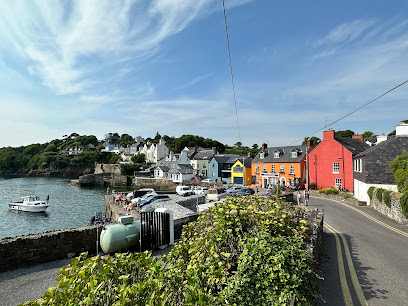
Fishy Fishy Kinsale
Discover the taste of the sea at Fishy Fishy Kinsale, where fresh seafood meets stunning waterfront views in the heart of Ireland.
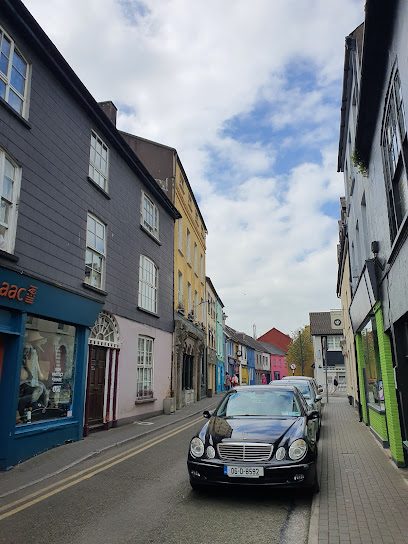
Trident Hotel Kinsale
Experience luxury at Trident Hotel Kinsale, where stunning coastal views meet exceptional hospitality in the heart of Ireland's culinary capital.

The Spaniard Inn
Discover the heart of Kinsale at The Spaniard Inn, where traditional Irish cuisine meets warm hospitality in a vibrant pub atmosphere.

Actons Hotel Kinsale
Experience luxury and breathtaking views at Actons Hotel Kinsale, your perfect escape in the heart of Ireland's charming coastal gem.

The White House Kinsale
Discover the vibrant atmosphere of The White House Kinsale, a delightful bar and gastropub that offers great food, live music, and a taste of local culture.

Kitty Ó Sé’s Bar & Restaurant
Discover the vibrant atmosphere and authentic Irish cuisine at Kitty Ó Sé’s Bar & Restaurant in Kinsale, a perfect spot for travelers.
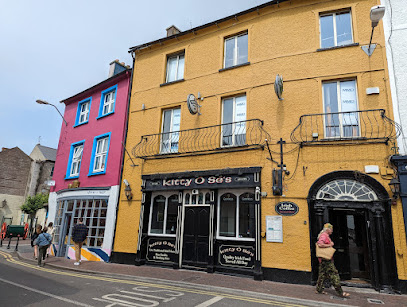
Man Friday
Discover the flavors of the sea at Man Friday, Kinsale's premier seafood restaurant with stunning harbor views.

Jim Edwards
Experience the heart of Irish cuisine at Jim Edwards in Kinsale, where local flavors and warm hospitality come together for an unforgettable dining experience.
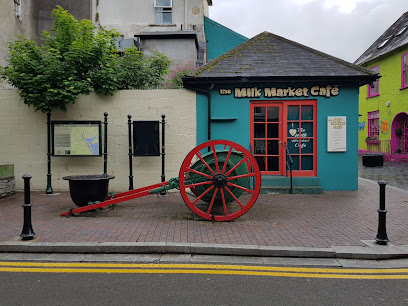
Lusitania Museum & Old Head Signal Tower
Explore the Lusitania Museum & Old Head Signal Tower, a captivating historical site in County Cork, showcasing maritime history and stunning coastal views.

Blue Haven Hotel Kinsale
Discover the charm of Kinsale while enjoying the comfort and hospitality at the Blue Haven Hotel, your perfect Irish getaway.

The Flying Poet Aviation Café - Coffee, Food, and Wine
Discover the charm of The Flying Poet Aviation Café in Kinsale, where coffee, food, and literature come together in a cozy atmosphere.

Unmissable attractions to see
Blarney Castle & Gardens
Explore Blarney Castle & Gardens, where history meets breathtaking beauty in the heart of Ireland's stunning countryside.
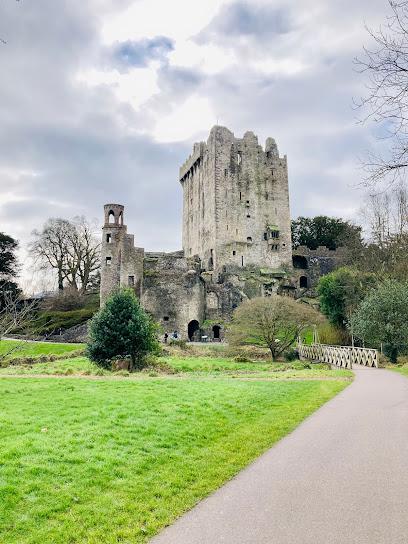
Titanic Experience Cobh
Explore the Titanic Experience in Cobh, where history comes alive with stories of tragedy, hope, and the enduring legacy of the RMS Titanic.

Charles Fort
Explore the rich history and stunning vistas of Charles Fort, a 17th-century fortress in Kinsale, County Cork, Ireland.

Blarney Woollen Mills
Explore Blarney Woollen Mills, a unique Irish goods store offering a wide array of authentic gifts, textiles, and culinary delights in a historic setting.

Blackrock Castle Observatory
Discover the magic of the stars at Blackrock Castle Observatory, a historic gem offering interactive science experiences and stunning riverside views in Cork.

Cork City Gaol
Explore the hauntingly beautiful Cork City Gaol, a historic site that reveals the captivating stories of Irish prisoners and the nation's past.
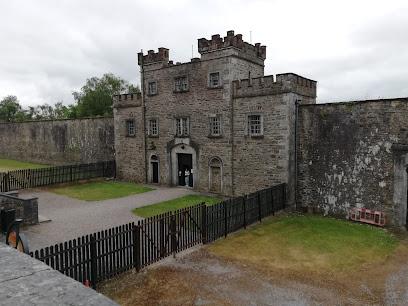
SuperValu Páirc Uí Chaoimh
Experience the excitement of Irish sports and culture at SuperValu Páirc Uí Chaoimh, Cork's premier stadium for unforgettable events.

Cobh Heritage Centre. The Queenstown Story
Explore the emotional tales of emigration and Irish heritage at Cobh Heritage Centre, a cultural gem in scenic Cobh, Co. Cork.

Midleton Distillery Experience
Discover the rich heritage of Irish whiskey at Midleton Distillery, where tradition meets craftsmanship in Co. Cork.

Spike Island Cork
Explore Spike Island in Cork, a historical gem with stunning views, rich heritage, and hiking trails in the heart of Ireland's scenic landscapes.

Saint Fin Barre's Cathedral
Explore the breathtaking Saint Fin Barre's Cathedral in Cork, an architectural gem with stunning Gothic design and rich history.

St. Colman's Cathedral
Discover the architectural beauty and rich history of St. Colman's Cathedral, a Gothic gem overlooking the stunning harbor of Cobh, County Cork.

Elizabeth Fort
Explore the historical significance and breathtaking views of Elizabeth Fort, a must-visit landmark in Cork, Ireland, rich in military heritage.

Crawford Art Gallery
Immerse yourself in the vibrant art scene of Cork at Crawford Art Gallery, showcasing a rich collection of Irish and international masterpieces.

Fota House
Experience the charm of Fota House, Arboretum & Gardens, a historic estate in Co. Cork featuring stunning architecture and beautiful gardens.

Essential places to dine
The Bulman Bar & Restaurant Kinsale
Experience traditional Irish hospitality at The Bulman Bar & Restaurant in Kinsale with stunning harbor views and delicious local cuisine.

Fishy Fishy Kinsale
Experience the freshest seafood delights at Fishy Fishy Kinsale - where local flavors meet breathtaking coastal views.

Trident Hotel Kinsale
Discover culinary delights and stunning harbor views at Trident Hotel Kinsale – where elegance meets Irish hospitality.

The Spaniard Inn
Experience authentic Irish hospitality at The Spaniard Inn in Kinsale with delightful cuisine and vibrant live music.

Lemon Leaf Cafe Bar & Townhouse
Experience family-friendly dining and cozy accommodations at Lemon Leaf Cafe Bar & Townhouse in Kinsale – where great food meets warm hospitality.

The White House Kinsale
Discover culinary delights at The White House Kinsale - where traditional Irish warmth meets European gastronomy in an inviting atmosphere.

Kitty Ó Sé’s Bar & Restaurant
Discover the heart of Kinsale at Kitty Ó Sé’s Bar & Restaurant - where traditional Irish cuisine meets warm hospitality.

The speckled door
Discover authentic Irish flavors at The Speckled Door in Old Head—where great food meets warm hospitality amidst stunning coastal views.

Man Friday
Experience exquisite seafood dining in Kinsale at Man Friday, where fresh catches meet breathtaking views.

Jim Edwards
Experience authentic Irish cuisine at Jim Edwards in Kinsale, where every dish tells a story of local flavor and tradition.

Cosy Café
Discover Kinsale's charming Cosy Café - your go-to spot for delicious breakfasts and freshly brewed coffee in a welcoming atmosphere.

Hamlets Bar + Kitchen
Discover culinary excellence at Hamlets Bar + Kitchen in Kinsale—where gourmet grill meets vibrant bar culture.
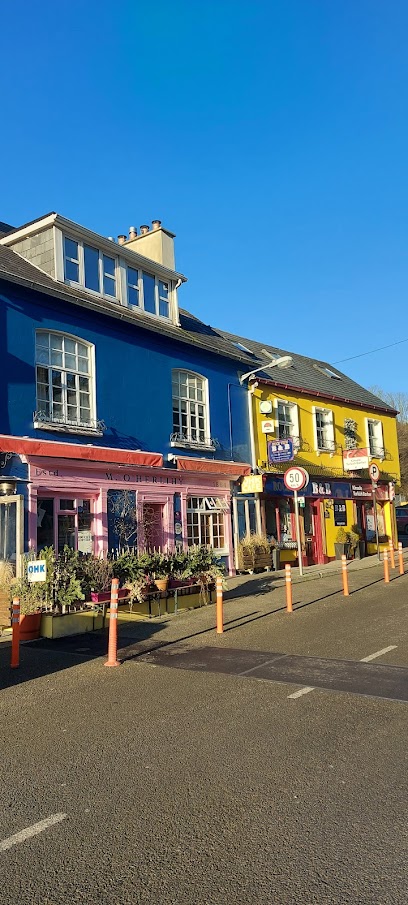
The Black Pig
Discover exquisite Modern European cuisine at The Black Pig in Kinsale - where local ingredients meet culinary artistry.

The Blue Haven Restaurant & Bistro
Experience Kinsale's finest seafood at The Blue Haven Restaurant & Bistro—where fresh flavors meet breathtaking harbor views.

Fisherman’s Catch (food truck)
Discover Fisherman’s Catch: A charming food truck in Kinsale serving fresh fish and chips amidst stunning coastal views.

Markets, malls and hidden boutiques
Lidl
Explore Lidl in Kinsale for fresh produce, local flavors, and unbeatable prices, making it the ideal grocery stop for every tourist.

Bandon Co Op Retail Centre
Explore the Bandon Co Op Retail Centre in Kinsale for a unique shopping experience featuring building materials, garden supplies, and home goods.

Koko Kinsale
Discover Koko Kinsale, a chocolate lover's paradise in Co. Cork, offering exquisite handcrafted chocolates and unique liquor-infused delights.

The Collector
Discover the charm of Kinsale at The Collector, where unique Irish gifts and delightful beverages await every visitor.

Spar
Explore Kinsale with ease at Spar, your go-to convenience store for snacks, essentials, and local treats in the heart of this charming coastal town.

Stone Mad
Explore the enchanting world of Stone Mad, a unique jeweler in Kinsale offering exquisite handcrafted jewelry inspired by the beauty of Ireland.
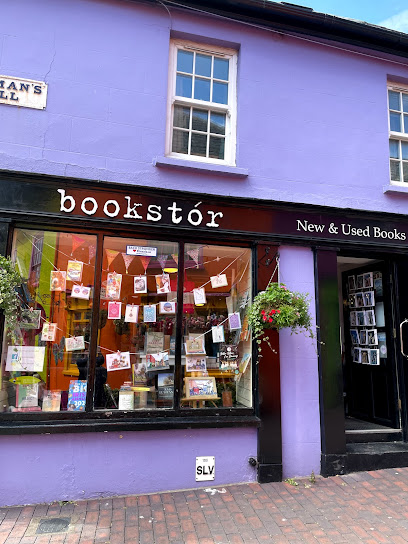
Boland Gift Shop & Crafts
Explore Boland Gift Shop & Crafts in Kinsale for unique handmade gifts and a taste of Irish artisan culture.

The Leather Studio of Kinsale
Discover the artistry of leather craftsmanship at The Leather Studio of Kinsale, where tradition meets creativity in every handcrafted piece.
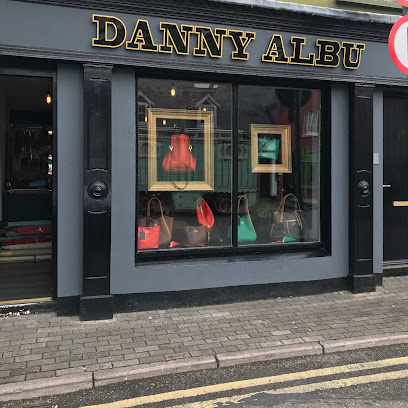
FatFace
Explore contemporary fashion at FatFace in Kinsale, where quality meets style for both men and women.

Croí Kinsale Jewellery
Explore the artistry of Croí Kinsale Jewellery, a treasure trove of handcrafted pieces that celebrate Irish culture and craftsmanship.

Granny's Bottom Drawer
Explore Granny's Bottom Drawer: Kinsale's eclectic gift shop filled with unique Irish goods, women's fashion, and charming home decor.

Bookstór
Explore Kinsale's Bookstór, a cozy used bookstore offering a treasure trove of literature in a charming atmosphere.

Lindas Of Kinsale
Explore the exquisite jewelry and unique craftsmanship at Lindas of Kinsale, a gem in the heart of Kinsale, Ireland.

enibas
Explore Enibas Jewelry Store in Kinsale for handcrafted pieces that reflect Ireland's rich artistry and coastal charm.

Kinsale Leather
Explore Kinsale Leather, where exquisite craftsmanship meets the rich heritage of Ireland in the heart of Kinsale, Co. Cork.
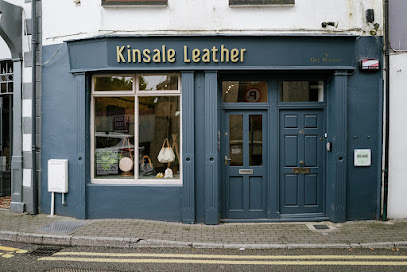
Essential bars & hidden hideouts
The Bulman Bar & Restaurant Kinsale
Experience authentic Irish cuisine and hospitality at The Bulman Bar & Restaurant in Kinsale, where stunning harbor views meet a vibrant atmosphere.

The Spaniard Inn
Experience authentic Irish hospitality at The Spaniard Inn in Kinsale, where traditional cuisine meets a vibrant atmosphere.

The White House Kinsale
Discover the vibrant atmosphere and culinary delights of The White House Kinsale, a top gastropub and live music venue in the heart of Kinsale.

Kitty Ó Sé’s Bar & Restaurant
Discover the heart of Kinsale at Kitty Ó Sé’s Bar & Restaurant, where authentic Irish cuisine meets warm hospitality in a vibrant atmosphere.

Man Friday
Experience the best of Kinsale's seafood dining at Man Friday, where fresh flavors meet the charm of coastal Ireland.

Jim Edwards
Experience the best of Kinsale's culinary scene at Jim Edwards, where fresh local ingredients meet warm Irish hospitality.

Hamlets Bar + Kitchen
Discover the vibrant flavors, refreshing cocktails, and charming atmosphere at Hamlets Bar + Kitchen in Kinsale, Co. Cork.

The Black Pig
Experience modern European cuisine and exceptional wines at The Black Pig, Kinsale's premier wine bar and tapas destination.

The Grey Hound
Experience the charm of The Grey Hound Pub in Kinsale, where great food, local brews, and a lively atmosphere await every visitor.
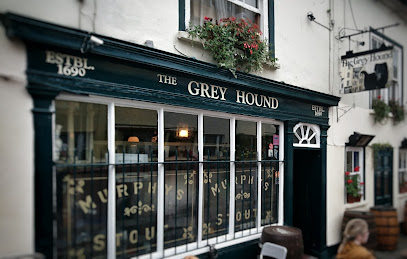
Max's Seafood Kinsale
Discover the best of fresh seafood and local flavors at Max's Seafood Kinsale, where every dish tells a story of the sea.
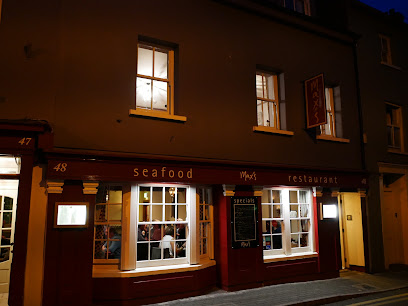
The Dock Bar
Discover the authentic taste of Ireland at The Dock Bar in Kinsale, where traditional dishes and live music create unforgettable memories.

The Tap Tavern
Discover The Tap Tavern, Kinsale's charming pub offering authentic Irish food, diverse drinks, and a warm atmosphere perfect for all visitors.

Sams Bar
Experience the warmth of Kinsale at Sams Bar, where great pints and local charm come together in a cozy atmosphere.

Oscar Madisons
Experience the vibrant atmosphere of Oscar Madisons in Kinsale, where great drinks and friendly faces create unforgettable memories.

Dalton's Bar and Accommodation Kinsale
Discover the heart of Kinsale at Dalton's Bar and Accommodation, where cozy hospitality meets vibrant local culture.

Local Phrases
-
- HelloDia duit
[dee-uh gwitch] - GoodbyeSlán
[slawn] - YesTá
[taw] - NoNíl
[neel] - Please/You're welcomeLe do thoil
[leh duh hull] - Thank youGo raibh maith agat
[guh rev mah og-gut] - Excuse me/SorryTá brón orm
[taw brohn urm] - How are you?Conas atá tú?
[kun-us ah-taw too] - Fine. And you?Tá mé go maith. Agus tú?
[taw may guh mah. ah-gus too] - Do you speak English?An bhfuil Béarla agat?
[on will bayr-lah ah-gut] - I don't understandNí thuigim
[nee hug-im]
- HelloDia duit
-
- I'd like to see the menu, pleaseBa mhaith liom an mianú
[ba wyh lum on meen-oo] - I don't eat meatNí ithim feoil
[nee ih-him fwee-l] - Cheers!Sláinte!
[slawn-cheh] - I would like to pay, pleaseBa mhaith liom íoc, le do thoil
[ba wyh lum eek, leh duh hull]
- I'd like to see the menu, pleaseBa mhaith liom an mianú
-
- Help!Cabhair!
[ka-wir] - Go away!Imigh uaim!
[ih-mee oom] - Call the Police!Glan an Gardaí!
[glawn on gar-dee] - Call a doctor!Glan dochtúir!
[glawn dohk-too-ir] - I'm lostTá mé caillte
[taw may kall-cheh] - I'm illTá mé tinn
[taw may chin]
- Help!Cabhair!
-
- I'd like to buy...Ba mhaith liom ceannach...
[ba wyh lum can-ukh] - I'm just lookingNíl mé ach ag féachaint
[neel may ahk egg fay-uhkh-int] - How much is it?Cé mhéad atá air?
[kay vayd ah-taw ir] - That's too expensiveTá sé ró-dháiríre
[taw shay roe-gaw-ree-ruh] - Can you lower the price?An féidir leat an praghas a ísliú?
[on fay-dur lat on prah-gus ah eesh-loo]
- I'd like to buy...Ba mhaith liom ceannach...
-
- What time is it?Cén t-am é?
[kayn tahm ay] - It's one o'clockTá sé a haon
[taw shay a hayn] - Half past (10)Leathuair tar éis (10)
[lah-hoo-ir tah-ir aysh (10)] - MorningMaidin
[mah-jin] - AfternoonTráthnóna
[traw-noh-nuh] - EveningTráthnóna
[traw-noh-nuh] - YesterdayInné
[in-ay] - TodayInniu
[in-yoo] - TomorrowAmárach
[ah-maw-rahk] - 1A haon
[ah hayn] - 2Dhá
[gaw] - 3Trí
[tree] - 4Ceathair
[cah-hir] - 5Cúig
[coo-ig] - 6Sé
[shay] - 7Seacht
[shah-kht] - 8Ocht
[ukht] - 9Naoi
[nee] - 10Deich
[dyeh]
- What time is it?Cén t-am é?
-
- Where's a/the...?Cá bhfuil a...
[kaw will ah] - What's the address?Cad é an seoladh?
[kad ay on shoh-luh] - Can you show me (on the map)?An féidir leat mé a thaispeáint (ar an léarscáil)?
[on fay-dur lat may ah hasp-aynt (ar on layr-skawl)] - When's the next (bus)?Cén t-am an chéad (bus)?
[kayn tahm on khayd (bus)] - A ticket (to ....)Ticéad (go dtí ....)
[tik-ayd (guh dee)]
- Where's a/the...?Cá bhfuil a...
History of Kinsale
-
The Battle of Kinsale, fought in 1601, was a turning point in Irish history. This conflict involved the English forces clashing with Irish and Spanish troops. The Spanish had landed in Kinsale to aid the Irish in their rebellion against English rule. However, the English forces, led by Charles Blount, Lord Mountjoy, ultimately defeated the combined Irish and Spanish armies. This battle marked the end of the Gaelic order in Ireland and paved the way for the English conquest of the country.
-
Constructed in the late 17th century, Charles Fort is one of the most iconic landmarks in Kinsale. Named after King Charles II, this star-shaped fort was designed by Sir William Robinson to protect against naval invasion. The fort played a significant role in the Williamite War in Ireland (1689-1691) and was besieged by John Churchill, the future Duke of Marlborough. Today, it stands as a well-preserved example of military architecture and offers stunning views of Kinsale Harbour.
-
Built in the early 16th century by the Earl of Desmond, Desmond Castle has served various purposes over the centuries, including a customs house, a naval prison, and a workhouse. One of the castle’s most fascinating aspects is its connection to the wine trade. Kinsale was historically a major wine port, and the castle now houses the International Museum of Wine, which explores the town’s rich history in wine trading and its connections with the wine regions of France, Spain, and Portugal.
-
On May 7, 1915, the RMS Lusitania, a British ocean liner, was torpedoed by a German U-boat off the coast of Kinsale, resulting in the loss of 1,198 lives. This tragic event stirred international outrage and influenced the United States' decision to enter World War I. The people of Kinsale played a crucial role in the rescue operations, and a memorial in the Old Head of Kinsale commemorates the victims. The disaster remains a poignant chapter in the town's maritime history.
-
Kinsale’s location on the southern coast of Ireland has made it a significant maritime hub for centuries. The town’s history is deeply intertwined with its fishing and trading activities. During the 18th and 19th centuries, Kinsale was a prominent port, exporting fish, corn, and linen to Europe and the Americas. The town’s maritime heritage is celebrated annually during the Kinsale Gourmet Festival, which highlights its long-standing tradition of seafood and hospitality.
-
St. Multose Church, founded in 1190, is one of the oldest churches in continuous use in Ireland. This medieval structure, dedicated to St. Multose, features a blend of architectural styles, reflecting its long history. The church played a central role in the community, serving not only as a place of worship but also as a site for important local events. Its graveyard holds the tombs of notable figures, including those who perished in the Battle of Kinsale.
-
Kinsale’s economy has evolved significantly over the centuries. Initially a thriving fishing and trading port, the town adapted to changes in economic conditions and developed a reputation for fine dining and tourism. The decline of the fishing industry in the 20th century led to a shift towards tourism, and Kinsale is now renowned for its gourmet restaurants, art galleries, and historical sites. This transformation highlights the town’s resilience and ability to reinvent itself while preserving its rich cultural heritage.
Kinsale Essentials
-
Kinsale is located in County Cork, Ireland. The nearest international airport is Cork Airport, approximately 20 kilometers away. From the airport, you can take a taxi or a bus to Kinsale. The journey typically takes around 30 minutes by road. Alternatively, you can drive from Dublin, which is about a 3-hour journey via the M8 motorway.
-
Kinsale is a small town, and many of its attractions are within walking distance. For longer trips, local taxis are readily available and relatively inexpensive. There are also local bus services connecting Kinsale to Cork and other nearby towns. Renting a car can be a convenient option for exploring the surrounding areas at your own pace.
-
The official currency in Ireland is the Euro (EUR). Credit and debit cards are widely accepted in hotels, restaurants, and shops. However, it is advisable to carry some cash for smaller establishments or in case of emergencies. ATMs are available in Kinsale, and major cards such as Visa and MasterCard are commonly accepted.
-
Kinsale is generally a safe destination for tourists. However, like any travel destination, it is advisable to take standard precautions. Avoid walking alone at night in unfamiliar areas and keep an eye on your belongings in crowded places. Kinsale does not have specific high-crime areas targeting tourists, but it is always best to stay vigilant and aware of your surroundings.
-
In case of emergency, dial 112 or 999 for immediate assistance. The local police station (Garda Síochána) and medical facilities are available in Kinsale. It is recommended to have travel insurance that covers medical emergencies. For minor health issues, there are pharmacies in the town where you can purchase over-the-counter medications.
-
Fashion: Do dress in layers, as the weather can be unpredictable. Comfortable walking shoes are recommended. Religion: Do respect local customs and traditions, especially when visiting religious sites. Public Transport: Do be respectful and give up your seat to elderly passengers. Greetings: Do greet people with a friendly 'hello' or 'hi.' A handshake is also common. Eating & Drinking: Do try local delicacies and seafood. Don't be afraid to ask for recommendations from locals.
-
To experience Kinsale like a local, visit the local markets where you can buy fresh produce and artisanal products. Engage with locals, as they are often friendly and willing to share stories about the town's history and culture. Don't miss visiting the Charles Fort and James Fort, which offer stunning views and a glimpse into the area's past. For a unique experience, take a boat trip around Kinsale Harbour.
Trending Landmark in Kinsale
-
Blarney Castle & Gardens
-
Charles Fort
-
Dinos
-
The Bulman Bar & Restaurant Kinsale
-
Fishy Fishy Kinsale
-
Trident Hotel Kinsale
-
The Spaniard Inn
-
Actons Hotel Kinsale
-
The White House Kinsale
-
Kitty Ó Sé’s Bar & Restaurant
-
Man Friday
-
Jim Edwards
-
Lusitania Museum & Old Head Signal Tower
-
Blue Haven Hotel Kinsale
-
The Flying Poet Aviation Café - Coffee, Food, and Wine
Nearby Cities to Kinsale
-
Things To Do in Cork
-
Things To Do in Killarney
-
Things To Do in Tralee
-
Things To Do in Limerick
-
Things To Do in Waterford
-
Things To Do in Dingle
-
Things To Do in Ennis
-
Things To Do in Kilkenny
-
Things To Do in Wexford
-
Things To Do in Salthill
-
Things To Do in Galway
-
Things To Do in Athlone
-
Things To Do in Bray
-
Things To Do in Dublin
-
Things To Do in Westport









